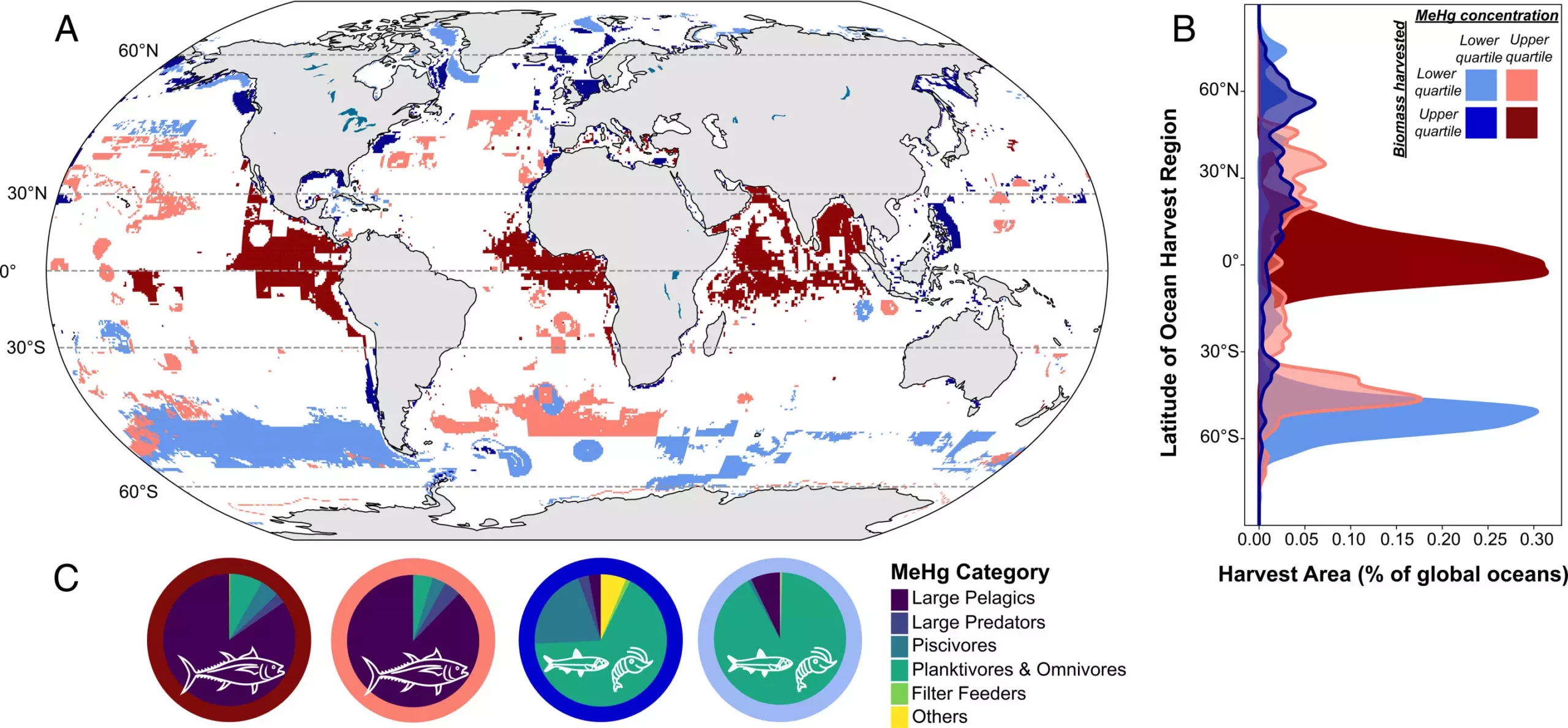

Recent investigations reveal the alarming consequences of industrial fishing practices, particularly those targeting large pelagic fish such as tuna. A study conducted by researchers from the Harvard John A. Paulson School of Engineering and Applied Sciences, in collaboration with the University of Delaware and the University of British Columbia, has uncovered a disturbing trend: over 70% of the methylmercury found in ocean-caught fish comes from these industrial fisheries. The ramifications are multifaceted and pose significant health risks, particularly for children and vulnerable adult populations.
Methylmercury, a potent neurotoxicant, is linked to developmental delays in children and cardiovascular issues in adults. The correlation between industrial fishing practices and rising levels of this harmful substance in our food supply cannot be overstated. Given that global demand for tuna and other large fish has surged in recent years, driven largely by advancements in fishing technologies, the risks associated with methylmercury exposure have become an urgent public health concern.
The modern market for large pelagic seafood has intensified, augmenting the pressure on tuna populations and other similar species. Factors contributing to this increase include enhancements in fishing methods, such as onboard freezing and the use of fish aggregating devices. Such technological advancements have fostered rapid expansion in the tuna industry since the 1980s.
As a result, tuna has transitioned from a niche product to a staple in many diets worldwide. Consequently, this increased availability has inadvertently led to higher human exposure to methylmercury, since large pelagic seafood typically contains more of this contaminant than smaller species. The interconnection between market dynamics and health implications is becoming more pronounced as consumer choices drive industrial fishing practices that can compromise safety.
A deeper exploration into the chemistry behind mercury reveals a complex interaction that starts with atmospheric emissions. Mercury is released into the environment through various means, including coal combustion and industrial processes, along with natural sources like volcanic activity. Once released, mercury settles into terrestrial and aquatic environments, where it is converted into methylmercury by microorganisms.
Interestingly, warmer waters—commonly found in tropical and subtropical regions—are hotspots for methylmercury production. These areas also play host to apex predators like tuna, which can accumulate significant levels of methylmercury due to a process known as biomagnification. This means that as you ascend the food chain, the concentrations of methylmercury rise, posing even greater risks to those consuming these upper-tier marine species.
The findings of the research team stress that industrial fishing practices are exacerbating methylmercury exposure for the population. Dr. Mi-Ling Li, an Assistant Professor of Environmental Chemistry at the University of Delaware, points out that the current practices are placing people at risk and call for the necessity of reevaluating our seafood consumption choices.
While fish are often promoted as a healthy protein source, the paradox lies in the fact that large pelagic fish are simultaneously the most exposed to harmful methylmercury and the least nutrient-rich. Important nutrients such as selenium and omega-3 fatty acids are often found in lower quantities in fish from warmer waters, compounding the health risks associated with the consumption of these seafood varieties.
To mitigate these health concerns, the research advocates looking toward small pelagic fish—such as anchovies, sardines, and herring—as healthier alternatives. These species not only contain significantly lower levels of methylmercury but also boast higher concentrations of beneficial omega-3 fatty acids. A shift towards consuming these smaller fish could provide essential nutrients while minimizing health risks associated with larger predators.
Moreover, the implications for subsistence fishing communities—those that rely on local fisheries for sustenance—are staggering. The study reveals that these populations are highly susceptible to methylmercury exposure, with estimates suggesting that 84% to 99% of subsistence fisheries around the world exceed safe consumption thresholds. The stark reality is that these communities bear the brunt of pollution without having contributed to it, raising ethical questions about environmental justice and resource management.
As the industrial fishing industry moves forward, it must do so with a keener awareness of the environmental and health implications stemming from its practices. Rethinking seafood consumption is essential for fostering a healthier population and sustainable fishing regimes. Awareness of the risks associated with methylmercury exposure can empower consumers to make informed choices, paving the way toward a more sustainable and health-conscious future. The need for dialogue and action is greater than ever, ensuring economic practices do not overshadow the intrinsic value of human health and ecological balance.
In the world of pharmaceuticals, innovation often hinges on finding new compounds that can lead…
In the heart of the Amazon basin, drastic climate changes present an alarming reality that…
Air fryers have rapidly surged in popularity, captivating home cooks and culinary enthusiasts alike. When…
In an era where technology and social media reign, the importance of sleep often takes…
In an era where environmental consciousness is paramount, the maritime industry has long been scrutinized…
Radionuclides, often relegated to discussions surrounding nuclear energy and radioactive waste, have far-ranging implications for…
This website uses cookies.